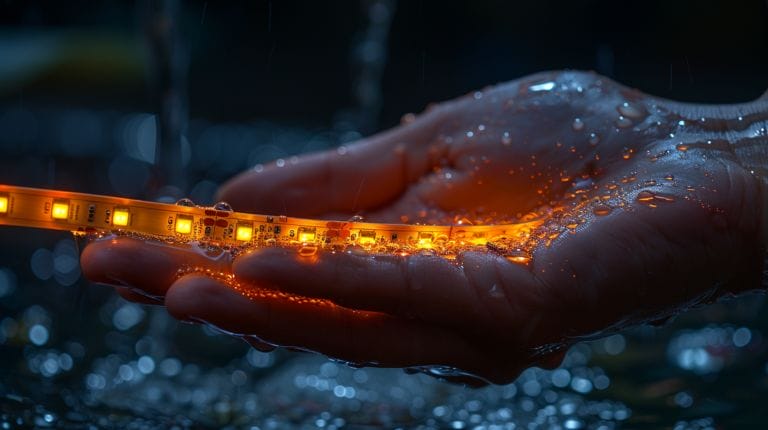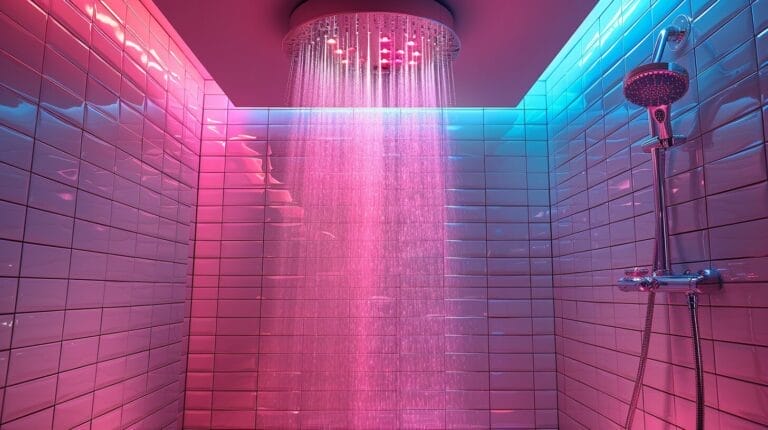How Bright Is 20000 Lumens? Illumination Explained
When we consider the sheer magnitude of 20,000 lumens, it’s hard not to be intrigued by the level of brightness it offers. Imagine the impact such illumination could have on a space, whether indoors or outdoors. The question remains – how does this measure of light truly translate into our daily environments?
In our how bright is 20000 lumens topic, we will explore the practical implications and nuances of lumens, shedding light on its significance and applications that might surprise you.
Key Takeaways
- 20000 lumens offer exceptionally bright lighting suitable for large indoor and outdoor spaces.
- Transforms environments, enhances colors, and highlights architectural features effectively.
- Provides safety and security in outdoor settings like sports events, construction sites, and monitoring areas.
- Rivals daylight brightness, creating a well-illuminated environment for stadiums, stages, and large outdoor areas.
- Considerable lux and foot-candle levels make 20000 lumens ideal for transforming any space into a brilliantly lit area.
Understanding the Concept of Lumens and Brightness

When we talk about lumens, we’re referring to the total amount of visible light emitted by a source. Essentially, lumens measure the brightness of a light source. Understanding lumens is vital in determining the appropriate lighting for various needs. For instance, a standard 60-watt incandescent bulb typically produces around 800 lumens, which is suitable for general lighting purposes in homes. However, for tasks requiring more focused light, such as reading or detailed work, you might need a light source with a higher lumen output.
Different lighting needs call for varying lumen levels. A kitchen, where detailed tasks are common, would benefit from lighting around 450-750 lumens per square meter. On the other hand, a living room may only require about 250-500 lumens per square meter for ambient lighting. By understanding how lumens measure brightness, we can effectively tailor our lighting choices to suit specific requirements, ensuring spaces are adequately illuminated for their intended use.
The Conversion Between Lumens, Watts, and LED Bulbs

Moving from understanding lumens to practical applications, we now explore the conversion between lumens, watts, and LED bulbs. When it comes to LED bulbs, the relationship between lumens and watts is essential to understand brightness levels. Unlike traditional incandescent bulbs, LED bulbs are more energy-efficient and produce higher lumens per watt. This means that a lower wattage LED bulb can still provide a high lumen output, making them a cost-effective and eco-friendly lighting choice.
In the world of LED lighting, brightness is directly related to lumens, not watts. As a rule of thumb, a 60-watt incandescent bulb is equivalent to about 800 lumens in an LED bulb, while a 100-watt bulb is closer to 1600 lumens. Different types of LED bulbs have varying lumen outputs, with standard A19 LED bulbs typically ranging from 800 to 1600 lumens. Understanding this conversion can help you choose the right LED bulb for your desired level of brightness while also conserving energy.
How Bright is 20000 Lumens in Indoor Settings

In indoor settings, 20,000 lumens can provide exceptionally bright lighting suitable for large spaces or areas with high ceilings. This level of brightness creates a vibrant atmosphere, enhancing visibility and creating a modern ambiance. When properly adjusted, 20,000 lumens can transform indoor environments, making them more inviting and dynamic.
Here are some ways 20,000 lumens can impress in indoor settings:
- Illuminating Every Corner: 20,000 lumens guarantee that even the darkest corners are well-lit, eliminating shadows and creating a well-balanced brightness throughout the space.
- Enhancing Colors: The high brightness of 20,000 lumens can make colors appear more vivid and true to life, adding an element of vibrancy to any indoor setting.
- Creating a Spacious Feel: With 20,000 lumens, indoor spaces can feel more expansive and open, providing a sense of airiness and grandeur.
- Highlighting Architectural Features: The brightness of 20,000 lumens can accentuate architectural details, adding depth and dimension to the indoor environment.
The Effectiveness of 20000 Lumens in Outdoor Environments

Considering the brightness of 20,000 lumens in outdoor settings, it effectively illuminates large areas with a powerful and encompassing light. In outdoor environments, factors like ambient light and distance play vital roles in determining the effectiveness of 20,000 lumens. The intensity of this light output is particularly beneficial for outdoor settings where higher levels of illumination are required for activities like nighttime sports events, construction sites, or outdoor security monitoring.
At a distance, 20,000 lumens can provide ample brightness to guarantee visibility over a significant area, making it ideal for outdoor spaces that need to be well-lit for safety and security reasons. When compared to indoor settings, the impact of 20,000 lumens is more pronounced outdoors due to the vast expanse of open spaces. This level of brightness not only enhances visibility but also contributes to creating a sense of safety and comfort in outdoor environments, making it a valuable lighting option for various outdoor applications.
Comparing the Brightness of 20000 Lumens to Other Light Measurements

When comparing the brightness of 20,000 lumens to other light measurements, one can easily discern its significant impact in various lighting scenarios. Lumens are a measure of the total amount of visible light emitted, making 20,000 lumens a powerful source of illumination. To put this into perspective:
- Comparing 20,000 lumens to lux and foot-candles: 20,000 lumens would translate to a considerable number of lux and foot-candles, showcasing its brightness intensity.
- How the brightness of 20,000 lumens compares to daylight: 20,000 lumens can rival the brightness of daylight, providing a natural and radiant lighting experience.
- The potential applications of a 20,000 lumen light source: With 20,000 lumens, one can illuminate large outdoor areas, stadiums, or stages effectively.
- Utilizing a 20,000 lumen light bulb: A light bulb emitting 20,000 lumens can transform any space into a brilliantly lit environment, suitable for various creative and functional purposes.
Conclusion
Overall, 20,000 lumens is a powerful level of brightness that can effectively illuminate both indoor and outdoor spaces, providing ample light for various activities and purposes.
Whether for enhancing colors indoors or ensuring safety and security outdoors, the brightness of 20,000 lumens is comparable to daylight and can transform any environment into a brilliantly lit space.
Frequently Asked Questions
What are lumens and how are they related to brightness?
Lumens are a measurement unit that indicates the amount of light produced by a light source. The more lumens a light source emits, the brighter it will be.
How many lumens are considered bright?
The number of lumens that are considered bright can vary depending on the lighting applications. Generally, anything above 10,000 lumens is considered quite bright.
What is the difference between LED lights and incandescent lights in terms of brightness?
LED lights are known to be brighter compared to traditional incandescent lights while consuming less energy. A 60-watt incandescent bulb produces around 800 lumens, whereas an LED light with the same wattage can produce significantly more lumens.
How does the lux level play a role in determining the brightness of a light source?
Lux is a unit of measurement that measures the intensity of light on a surface area. The higher the lux level, the brighter the light will appear on that surface.
Which types of light sources are known to emit a large number of lumens?
LED lights and high-intensity discharge (HID) lights are known to produce a high amount of lumens, making them suitable for warehouse lighting and other large spaces.







